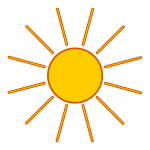
Back معتقدات شعبية ألبانية Arabic আলবেনিয়ান লোকবিশ্বাস Assamese Mitologia albanesa Catalan Creencias populares albanesas Spanish Ալբանական դիցաբանություն Armenian Mitologia albanese Italian အယ်လ်ဘေးနီးယား ရိုးရာယုံကြည်မှုများ Burmese Албанская мифология Russian Besimet folklorike shqiptare Albanian Albansk mytologi Swedish
| Part of a series on |
| Albanians |
|---|
 |
| By country |
|
| Culture |
| Religion |
| Languages and dialects |
| Mythology |
|---|
Albanian folk beliefs (Albanian: Besimet folklorike shqiptare) and mythological stories comprise the beliefs expressed in the customs, rituals, myths, legends and tales of the Albanian people. The elements of Albanian mythology are of ancient Paleo-Balkanic origin and almost all of them are pagan.[3] Albanian folklore evolved over the centuries in a relatively isolated tribal culture and society.[4] Albanian folk tales and legends have been orally transmitted down the generations and are still very much alive in the mountainous regions of Albania, Kosovo, western North Macedonia, Montenegro and South Serbia and among the Arbëreshë in Italy and the Arvanites in Greece.[5]
In Albanian mythology, the physical phenomena, elements and objects are attributed to supernatural beings. The deities are generally not persons, but animistic personifications of nature.[6] The earliest attested cult of the Albanians is the worship of the Sun and the Moon.[2] In Albanian folk beliefs, the earth cult and sky cult have a special place, and an important role is played by fire, which is considered a living, sacred or divine element used for rituals, sacrificial offerings and purification.[7] Fire worship is associated with the cult of the Sun, the cult of the hearth and the cult of fertility in agriculture and animal husbandry.[8] Besa is a common practice in Albanian culture, consisting of an oath taken by Sun, by Moon, by sky, by earth, by fire, by stone, by mountain, by water and by snake, which are all considered sacred objects.[9] Associated with freedom and heroism, the eagle is the animal totem of the Albanian people.[10] A widespread folk symbol is the serpent, a totem of the Albanians associated with earth, water, sun, hearth and ancestor cults, as well as destiny, good fortune and fertility.[11] The cult of the Sun and the Moon also appears in Albanian legends and folk art.[12]
Albanian myths and legends are organized around the dichotomy of good and evil,[13] the most famous representation of which is the legendary battle between drangue and kulshedra,[14] a conflict that symbolises the cyclic return in the watery and chthonian world of death, accomplishing the cosmic renewal of rebirth. The weavers of destiny, ora or fatí, control the order of the universe and enforce its laws.[15] The characters in Albanian tales, legends and myths include humans, deities, demigods, monsters, as well as supernatural beings in the shapes of men, animals and plants.[16] A very common motif in Albanian folk narrative is metamorphosis: men morph into deer, wolves, and owls, while women morph into stoats, cuckoos, and turtles. Among the main bodies of Albanian folk poetry are the Kângë Kreshnikësh ("Songs of Heroes"), the traditional non-historical cycle of Albanian epic songs, based on the cult of the legendary hero.[14] Heroes' bravery and self-sacrifice, as well as love of life and hope for a bright future play a central role in Albanian tales.[16]
- ^ Galaty et al. 2013, pp. 155–157; Tirta 2004, pp. 68–82; Elsie 2001, pp. 181, 244; Poghirc 1987, p. 178; Durham 1928a, p. 51; Durham 1928b, pp. 120–125.
- ^ a b Elsie, Robert (ed.). "1534. Sebastian Franck: Albania: A Mighty Province of Europe". Texts and Documents of Albanian History.
- ^ Bonnefoy 1993, p. 253.
- ^ Elsie 2001, pp. vii–viii.
- ^ Elsie 1994, p. i; Elsie 2001b, p. ix.
- ^ Bonnefoy 1993, pp. 253–254; Skendi 1967, pp. 165–166.
- ^ Bonnefoy 1993, p. 253; Poghirc 1987, pp. 178–179 Tirta 2004, pp. 68–69, 135, 176–181, 249–261, 274–282, 327
- ^ Tirta 2004, pp. 68–69, 135, 176–181, 249–261, 274–282, 327; Poghirc 1987, pp. 178–179; Hysi 2006, pp. 349–361.
- ^ Tirta 2004, pp. 42–102, 238–239, 318; Bonnefoy 1993, p. 253; Elsie 2001, pp. 35–36, 193, 244; Poghirc 1987, pp. 178–179; Hysi 2006, pp. 349–361.
- ^ Tirta 2004, pp. 62–68.
- ^ Sinani 2010, pp. 105–106, 111; Stipčević 2009, p. 507; Doli 2009, pp. 127–128; Tirta 2004, pp. 62–68.
- ^ Poghirc 1987, p. 178; Tirta 2004, pp. 68–82; Elsie 2001, pp. 181, 244
- ^ Elsie 1994, p. i; Poghirc 1987, p. 179
- ^ a b Bonnefoy 1993, pp. 253–254.
- ^ Doja 2005, pp. 449–462; Kondi 2017, p. 279
- ^ a b Sokoli 2013, p. 181.
© MMXXIII Rich X Search. We shall prevail. All rights reserved. Rich X Search

